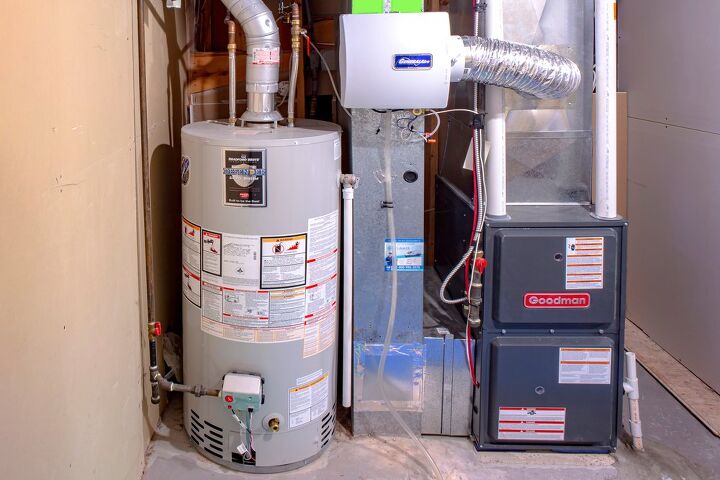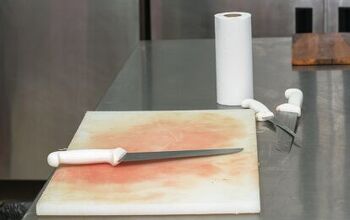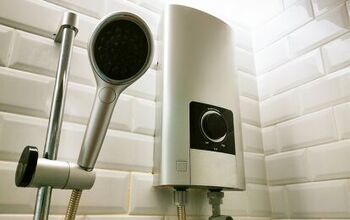3800 Vs. 4500 Watt Water Heater: What Are The Major Differences?

When buying a water heater, there are a lot of factors to take into consideration. After all, you want to find the one that fits your needs best. You consider things like tank size (if you aren’t going tankless) and BTU output.
But what about the wattage? When you see wattage referred to for water heaters, it is generally talking about the heating element. The heating element just that: heats the water up to the temperature we have set. The major difference is not necessarily in the wattage but in the application of either. For instance, you can go from a 4500-watt heating element to a 3800-watt heating element, but not vice versa.
Do You Need Water Heater Repair Services?
Get free, zero-commitment quotes from pro contractors near you.

Heating Your Water
It is important to note that you only have to contend with wattage in electric water heaters. Gas water heaters make use of gas burners, hence the name. Electric water heaters use either a singular or dual set of heating elements to heat the water.
In the event of dual heating elements, there would be an upper and lower element both constructed of metal. An electrical current passes through the heating element, heating the water up to the proper temperature.
How a Heating Element Works
When that electrical current passes through the heating element, it is met by resistance. The resistance is actually what creates the heat. Think about what happens when you rub your hands together quickly – they get warm.
That resistance then heats the water up accordingly. You may find a water heater with something like a pair of 4500-watt heating elements or a single 5500-watt heating element. The former would actually be better for heating the water up quickly.
3800 vs. 4500 Watt Water Heater: What are the Differences?
It kind of goes without saying that the 4500 watt heater delivers greater heating capacity. It does not take a guide like this to make that determination. What you need to know is whether or not you can replace one with the other. Moreover, there are considerations for recovery rate to consider.
The Wiring and Breaker
If you have a 4500-watt heating element on your water heater, you can switch to a 3800-watt element. Typically, this is done under a few conditions. For one, it is done when the electricity is not a 10-gauge wire with a 30-amp breaker. If the wire is 12-gauge and 20-amp, then you are limited to that 3800 watts.
It is also important to note that you cannot go from a 3800-watt heating element to a 4500-watt heating element without ensuring that your water heater and breaker are rated to handle the additional voltage. Just making the switch is the quickest way to find yourself with a burnt-out heating element or worse.
Recovery Rate
The recovery rate of a water heater is how quickly the unit is able to heat the water in the tank. For most 40-gallon water heaters, it takes an average of an hour to heat that water completely. That can vary on the model and wattage of the heating element.
A higher-rated heating element has a faster recovery rate. That means getting access to hot water again sooner than you would with a 3800-watt heating element. But in addition to the breaker conundrum, there is another caveat.
More wattage means more current to make the heating element operate. More current also means more energy spent. Unless you have a high-efficiency unit, you are likely looking at a bump in your energy bills. Whether that is worth the quicker recovery rate is up to you.
Different Types of Heating Elements
When considering not only the difference between 3800- and 4500-watt heating elements, you will find that there are three different types of heating elements. You can choose between low-density heating elements, high-density heating elements, and extra low-density elements.
Low-Density Heating Elements
A low-density heating element is generally made from copper with a nickel and magnesium oxide coating. This heating element will provide a bit more heating surface while also being less prone to things like corrosion.
Low-density heating elements are more expensive than their counterparts. A low-density heating element also has a screw type fitting when it comes to the installation.
High-Density Heating Elements
A high-density heating element, on the other hand, is quite a bit more cost-effective to install. For the most part, you can expect your water heater to come with a high-density element. You can either get one with a screw type or a flange connection.
This type of element is far more susceptible to corrosion compared to low-density elements. Not only that, but it is more prone to failure because of the high heat that gets generated. These are also made from copper but have a zinc coating.
Extra Low-Density Heating Elements
This is the best element that you can buy. Some extra low-density heating elements even come with a lifetime guarantee. These are not made from copper but stainless steel instead and are less prone to buildup. They also will not burn out.
The problem here is that you might not be able to find a low-density heating element that has a flange assembly. There are adapter kits out there, but that is just another cost on top of the elevated cost of the element. It really depends on your budget but it may be worth investing in a better heating element.
Do You Need Water Heater Repair Services?
Get free, zero-commitment quotes from pro contractors near you.

Signs Your Heating Element is Bad
For the most part, you aren’t going to be thinking about your heating element. Usually, that comes when the heating element goes bad and needs replacing. But how can you tell if the heating element is bad? Here are a few telltale signs.
Power is Off
When your water heater won’t power on, the problem typically isn’t with the unit itself, but with the power source. Sometimes it’s a breaker that has tripped. If you think that the heating element has gone bad, you can test it using a non-contact voltage tester (turn the power off!).
Water Heater is Leaking
There are a few issues that could arise leading leaks in your water heater, one of which is the heating element. Most of the time, though, it’s a loose valve. But if you notice that the leak is coming from the bottom of the heater, it could be indicative that the element or another crucial component has become damaged.
The Thermostat
Maybe you have done your due diligence on the heating element and it does not seem to be the issue. A lot of the time, the case is that the thermostat has malfunctioned. When a thermostat goes bad, it cannot properly regulate the temperature of the water. If it can’t tell the water heater to heat up, then the heating element will not kick on.
Many modern water heaters come with a safety thermostat as well. From time to time, that can cause issues with your water heater warming up, so test the safety thermostat if there is one.
The Water Heater Won’t Heat
This one might feel super obvious but it is a sure sign that something is up. The heating element is one of the most common problem areas when your water heater fails to heat up. Again, test out the heating element. You can disconnect it and use an ohmmeter to test the continuity of the heating element.
Test the screws of the heating element first. The resistance charge depends on what the heating element power rating is. If you don’t know what the wattage of your water heater is, check the label on the tank.
Related Articles

Ryan Womeldorf has more than a decade of experience writing. He loves to blog about construction, plumbing, and other home topics. Ryan also loves hockey and a lifelong Buffalo sports fan.
More by Ryan Womeldorf



























